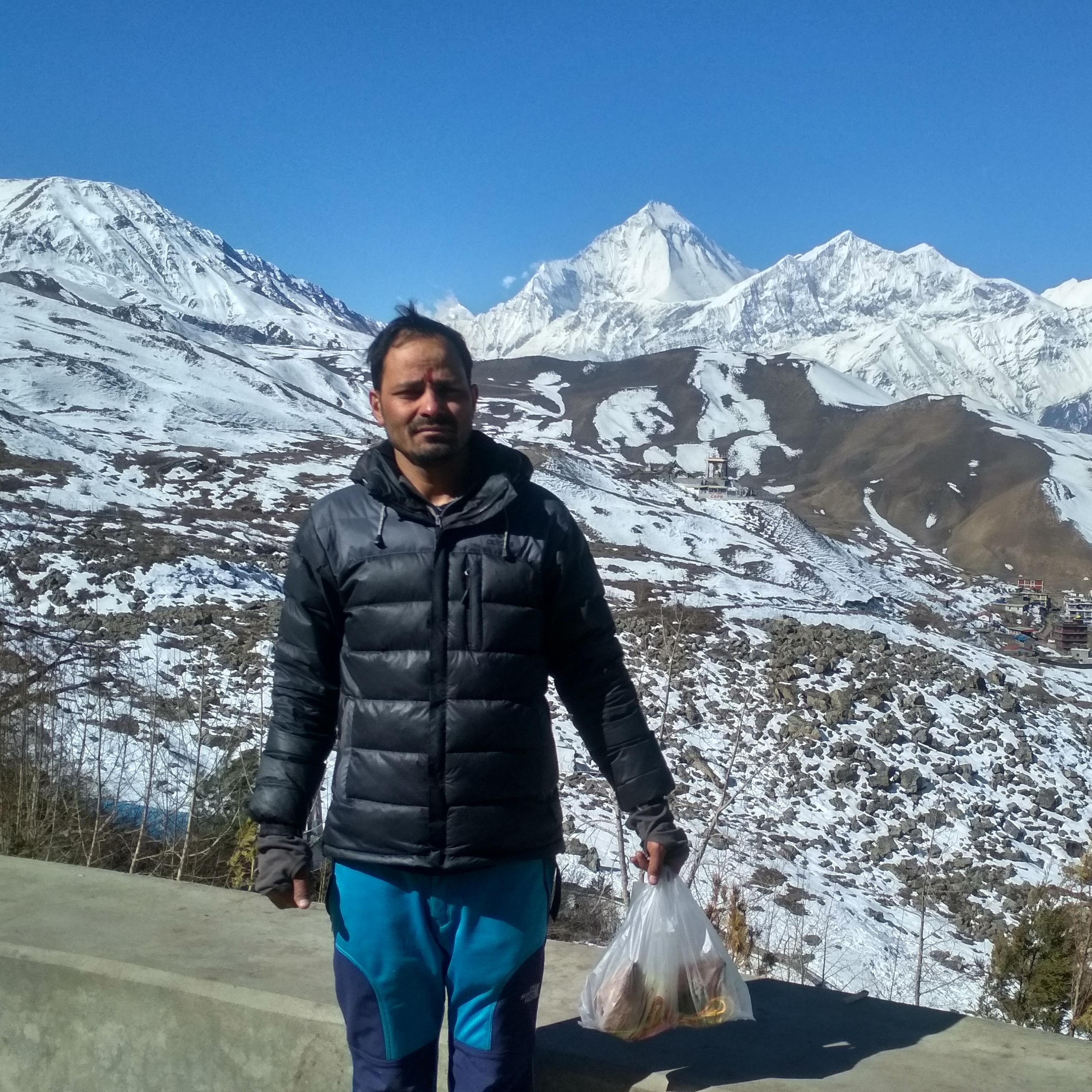Why is Pashupatinath Temple is regarded as one of the world heritage site?

Explore the spiritual significance of the most revered Hindu shrine in Nepal, Pashupatinath Temple, which is situated in Kathmandu along the Bagmati River.
Pashupatinath Temple, a UNESCO World Heritage Site in Kathmandu, the country’s capital, is one of the holiest places for Hindus worldwide. The sacred Pashupatinath Temple is the most exquisite example of Nepal’s spiritual abundance and its mingling of diverse religious and cultural customs. If you have heard about Nepal as a trekker, you may have heard about the Pashupatinath Temple, regardless of your spiritual and religious interests. This temple, which stands on the banks of the Bagmati River, is a symbol of Nepal’s rich cultural legacy as well as a place of worship. It is also a magnificent example of amazing architecture.
This temple, which is devoted to the Hindu god Lord Shiva, welcomes millions of tourists each year. We take you on a thorough exploration of the Pashupatinath Temple’s rich history, architecture, spiritual significance, and cultural significance in this blog.
Historical Background of Pashupatinath Temple
The Pashupatinath Temple honors Lord Shiva in his manifestation as the lord of all animals, or “Pashupatinath,” as the temple’s name in the local tongue implies.
Rich in Hindu mythology and regional folklore, the temple’s beginnings are the subject of numerous tales. According to legend, while traveling through the Kathmandu Valley, Lord Shiva and his consort Devi Parvati stopped to rest by the Bagmati River.
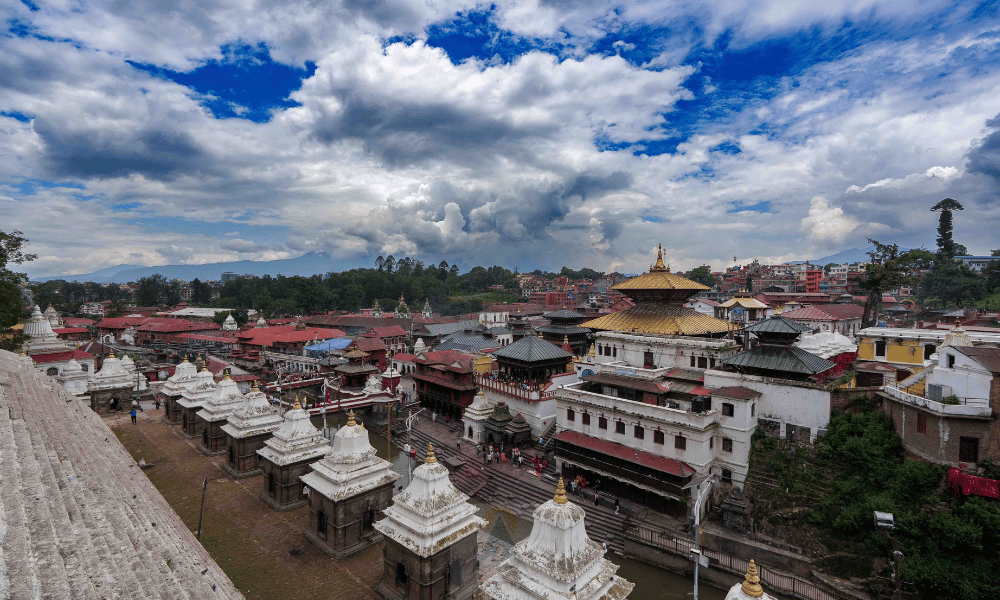
Lord Shiva and Mata Parvati transformed into deer and ventured into the forest after becoming so enchanted by its beauty and the surrounding forest. But eventually, the hunt for Lord Shiva started.
Finally, after various complications, the Gods found him in the forest, but he refused to leave. Ultimately, Lord Shiva announced that he would now be known as Pashupatinath, Lord of all animals.
Another, more well-known legend states that a wish-fulfilling cow named Kamadhenu once sought refuge in the Chandravan Mountain. It was observed that the cow would go to the same location each day to pour her milk. People became interested when they discovered that a glowing Shiva Lingam was buried beneath the ground at the same location, and that a cow was milking the lingam.
The current Pashupatinath Temple is the same site where the Lingam was discovered. According to legend, anyone who came here and saw the lingam would not experience an animal rebirth.
Construction and Development
Although a precise chronology of the Pashupatinath Temple’s beginnings is still unknown, the historical documents that are currently available indicate that the temple was initially built in the fifth century AD.
To become what it is today, the temple has undergone numerous additions and renovations. The temple has undergone continuous additions, reconstructions, and renovations.
However, despite numerous changes and difficulties, including the devastating 2015 earthquake, the main temple sanctum has withstood the test of time and remained intact over an extended period of time.
Temple Design
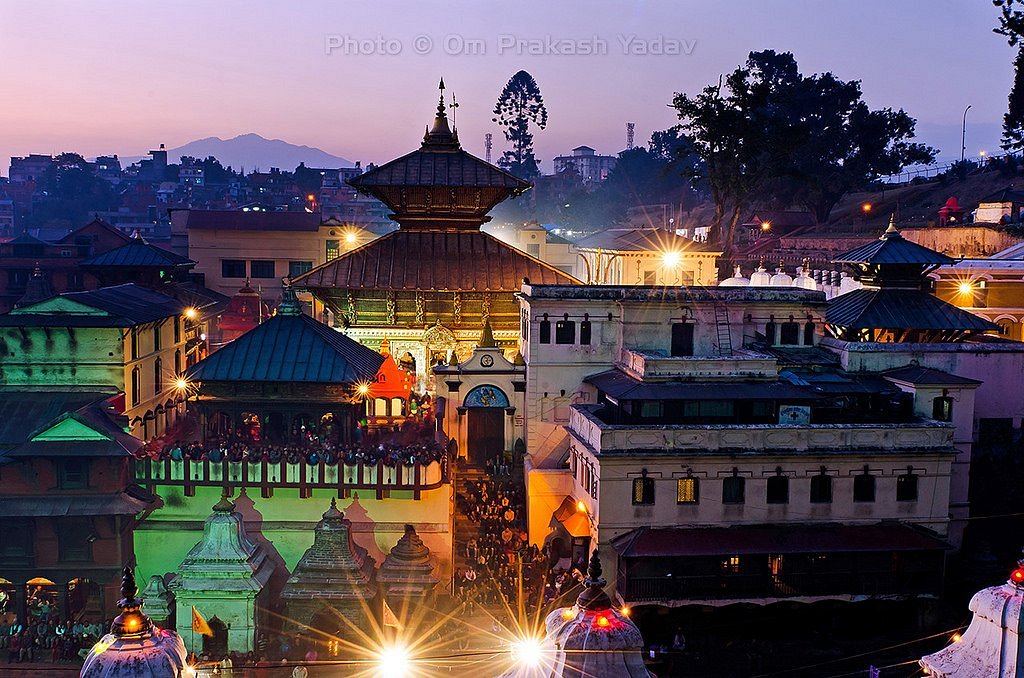
The vast complex that we see today, which is made up of numerous shrines, ghats, and sacred areas, may have begun as just the main glowing Shiva Lingam and a temple sanctum surrounding it.
The Pashupatinath Temple has a very distinctive architectural design, with tiered roofs that taper upward and a pagoda-style construction. The Pashupatinath temple’s overall design showcases the exquisite workmanship of Nepalese craftspeople
You will see two gold-plated roofs and intricately carved silver doors on the temple. The beauty of these is further enhanced by the wooden frames adorned with intricate carvings of Hindu deities.
Surrounding Structures
The entire complex is extremely holy and pious because of the numerous small temples devoted to different Hindu deities as well as other buildings of spiritual significance that encircle Pashupatinath’s main sanctum.
Ganesha Temple, Vishnu Temple, a maze filled with Shiva Lingams, stone statues of the gods, and more are all visible. Nandi, the bull and devoted mount of Lord Shiva, is a well-known figure that you will see. His enormous statue faces the main temple and is always watching over his master.
Beyond the temple complex, the Bagmati River, which has a number of cremation ghats on its bank, is an important surrounding structure. The fire in these ghats never goes out, you’ll discover.
The Hindu cremation ritual is performed in these ghats. It is believed that moksha, or freedom from the cycle of birth and rebirth, is guaranteed by dying and being cremated at Pashupatinath.
The beautiful evening aarti, which will calm your heart and mind, is located on the exact opposite side of these ghats. Therefore, seeing death and comfort at the same time can be a very different but frightening experience.
Spiritual Significance of Pashupatinath Temple
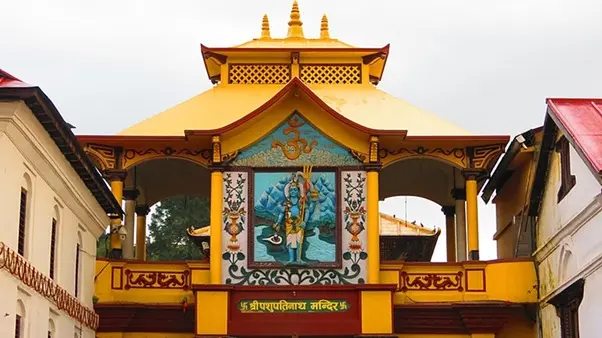
Hindus worldwide find great spiritual significance in the Pashupatinath Temple, which is regarded as one of the top tourist destinations in Nepal and the Kathmandu Valley.
The primary reason for this is that the temple portrays Lord Shiva’s omnipotence, as he is revered here as the guardian of all living things and is thought to be present everywhere. It is revered as one of the twelve Jyotirlingas, which are Lord Shiva’s manifestations. The five faces of this Shiva Lingam—Isana, Tatpurusha, Aghora, Vamadeva, and Sadyojata—each represent distinct life stages and universal truths.
For Hindus, visiting the Pashupatinath Temple is considered of high significance as it is believed to rid them of all their sins. Also, according to Hindu belief, being cremated at Pashupatinath ensures moksha, the soul’s final release from the cycle of reincarnation.
Cultural Significance
Pashupatinath Temple has great cultural significance in addition to its profound spiritual significance. The temple serves as the focal point for numerous Hindu festivals and rituals, first and foremost. At the Pashupatinath Temple, you will observe that numerous significant rituals, such as Aarti, Rudra Abhishek, Laakh Batti, and others in which sacrifices are offered to the deity, take place every day.
The temple complex is home to numerous Sadhu Babas and temple priests, known locally as Bhattas. They can be seen meditating on the temple grounds or bestowing blessings on the pilgrims.
Open-air cremations are held in the neighboring ghats along the Bagmati River, such as the Arya Ghat and the Bhasmeshwar Ghat. Some visitors may be surprised by this feature of Pashupatinath, but for Hindus, it is an extremely spiritual practice. The cremation involves placing the deceased’s body on a funeral pyre and releasing the ashes into the Bagmati River to represent the soul’s last journey to the afterlife.
Pashupatinath Temple’s architecture and surroundings provide a profound representation of Nepalese craftsmanship and cultural heritage.
Important Festivals at Pashupatinath Temple
All of the Hindu holidays, including Dashain, Tihar, and others in Nepal, are significant events held within the Pashupatinath Temple complex. Nonetheless, the temple is at its busiest during a few particular festivals. Major festivals honoring Lord Shiva, such as Teej and Maha Shivaratri, brings the Pashupatinath Temple to life. Thousands of devotees will congregate inside the complex during these festivals.
In addition, the temple is in a very good mood during the entire month of Shrawan, which is devoted to Lord Shiva in the Nepali calendar. You will not be able to enter the complex, particularly on Mondays of Shrawan.
During these celebrations, the temple complex is adorned with colorful decorations, and special rituals and pujas are performed. It is a time of great spiritual fervor and community spirit.
Pashupatinath as a Tourist Destination
Even though the Pashupatinath Temple is one of Nepal’s most popular tourist destinations, a wide range of visitors can be seen here. They would mostly be spiritual tourists.
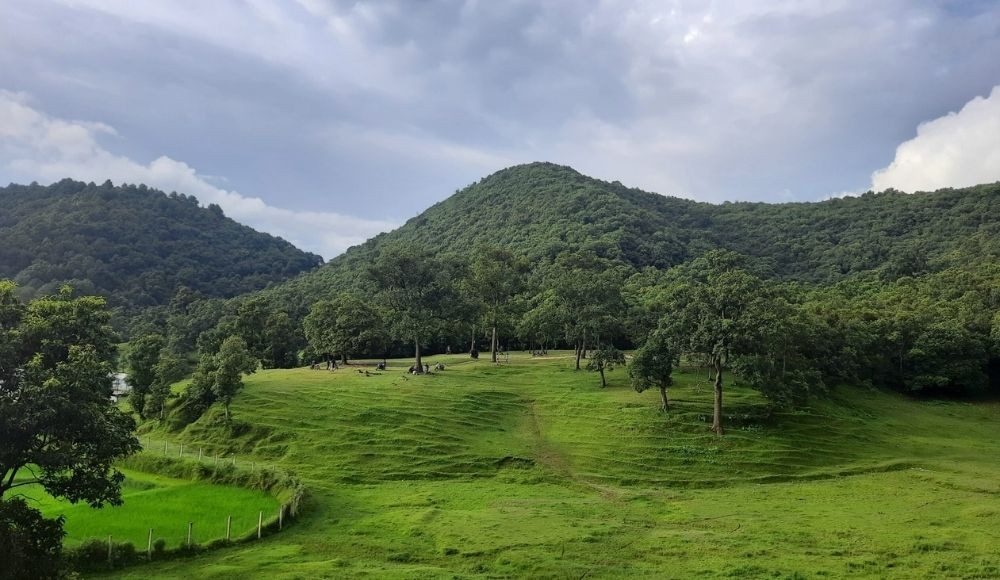
The religious significance of the Pashupatinath temple and the powerful spiritual atmosphere that permeates the temple complex, along with the rhythmic chanting of mantras, are what draw people to visit.
Experiencing Pashupatinath
Seeing Sadhus meditating by the banks of the Bagmati River, next to the always burning funeral pyres, can make a visit to Pashupatinath Temple a one-of-a-kind spiritual experience.
For the majority of pilgrims, visiting the Pashupatinath Temple is an extremely intimate experience. There are some cultural nuances that may be useful for a better experience as foreign visitors.
It’s easy to get to the temple complex. Tribhuvan International Airport in Kathmandu is about 5 kilometers away from the Pashupatinath temple.
At the airport, you can request a taxi or a car to drive you directly to the temple. Local buses are among the public transportation options available to you.
International visitors must pay a nominal entrance fee of approximately 1000 Nepali Rupees to enter the temple complex. 4 a.m. to 7 p.m. is when the temple is open.
Basic amenities like restrooms and parking are available close to the temple. In addition, there are a number of hotels and guesthouses near the temple that offer basic to luxurious lodging options for both pilgrims and visitors.
Major festivalslike Dashain and Tihar, which typically takes place in the fall September to November, is the most ideal times to visit Pashupatinath Temple. You can plan your itinerary appropriately because this is also the ideal time of year to trek in Nepal.
The best times to go are in the early morning or late evening, when there are fewer tourists and a more tranquil atmosphere, even during the busiest season.
It is important to keep in mind that non-Hindus are not permitted to enter the temple’s main sanctum. You are free to explore the nearby temples and locations, though.
Other tourist destinations close to Pashupatinath include the Guhyeshwari Temple, another significant religious location connected to the worship of Goddess Parvati, and the Boudhhanath Stupa, one of the biggest Buddhist stupas in the world.
With the exception of the main sanctum, most of the temple complex is open to photographers. There, it is strictly forbidden. Additionally, vendors near the temple sell religious artifacts like Shiva Lingams, prayer beads, and statues of deities.


